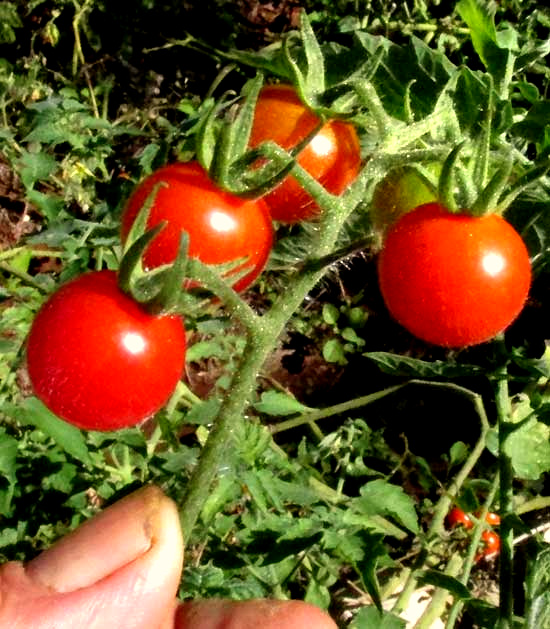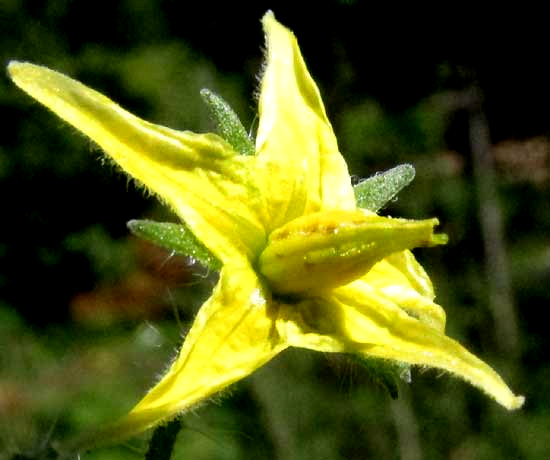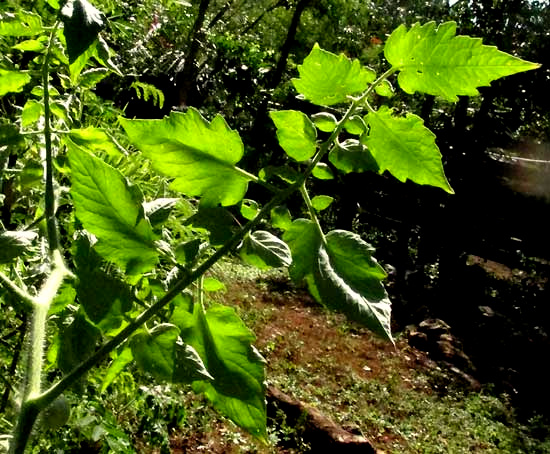Excerpts from Jim Conrad's
Naturalist Newsletter
from the December 11, 2016 Newsletter issued from Rancho Regenesis in the woods ±4kms west of Ek Balam Ruins; elevation ~40m (~130 ft), N20.876°, W88.170°; north-central Yucatán, MÉXICO
CHERRY TOMATOES
Few things are more pleasing to look at than ripe, red tomatoes on the vine, ready to be plucked. Here in the Yucatan it's hard to find a really good tomato. In frutarías, normally the only tomato cultivar available is the rubbery, oblong Roma, bred less for taste than for easy shipping and long shelf life. I think most Mexicans have never tasted a good tomato, one like homeowners up north often grow in their backyards.
Down here, especially during the rainy season, the problem is that the air and soil are so full of disease-causing fungal spores that tomato plants growing outdoors develop leaf diseases and die before a good crop is produced. The Roma cultivar seems a little more resistant, but the only kind of tomato that actually thrives here the way they do up North is the little cherry tomato, of which a congenial little cluster of very tasty little fruits is shown below:

A thumbnail-size cherry tomato flower with its five fused-together stamens in true tomato-flower fashion forming a cylinder around the female parts is shown below:

A healthy, compound cherry tomato leaf, prettily back-lighted by morning sunlight flooding into the garden, is shown below:

In a way, it's surprising that tomato plants have such a hard time here, since tomatoes are known to have been cultivated by the Aztecs of upland central Mexico as early as 700 AD. The word "tomato" is from the Aztec word tomatl. Probably the wild species from which tomatoes were developed was native to the Andes. It produced pea-sized fruits growing in clusters like grapes, somewhat like our cherry tomatoes. Maybe that's why cherry tomatoes do better here than other varieties -- maybe their genes haven't been so scrambled by human intervention that they've lost their natural resistances. Cherry Tomatoes are considered a variety of tomato, SOLANUM LYCOPERSICUM var. CERASIFORME.
When I was kid on the farm in Kentucky we didn't know about cherry tomatoes. When I went to the university I began noticing them turning up in salads and I figured that they were just one more thing that folks in rural areas didn't know about, but which people in the city had been enjoying all along. Now I read that, though cherry tomatoes have been around in one way or another for centuries, its commercialization and popularization didn't get underway until the 1970s, and didn't become a popular feature in Western meals until the 1980s.